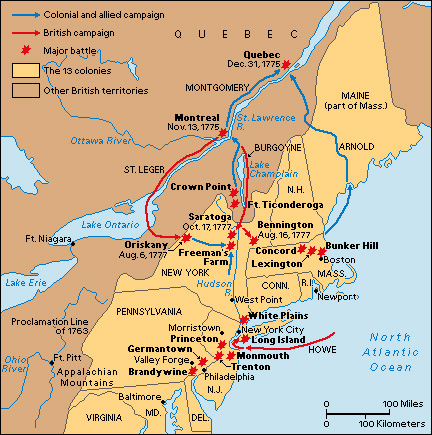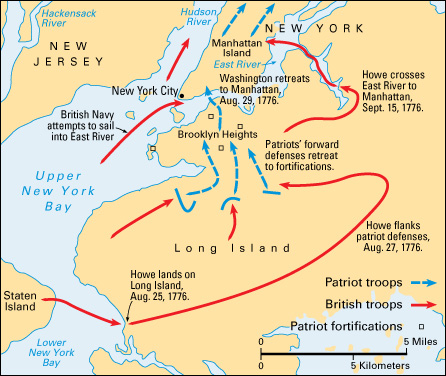Long Island, Battle of, was one of the first major battles of the American Revolution (1775-1783). It took place on Aug. 27, 1776, on the western end of Long Island, New York. That day, British forces under General William Howe surprised the American Continental Army, led by General George Washington, and forced them to retreat. A daring escape helped save the American army from a crushing defeat.

In July 1776, General Howe landed on Staten Island in New York Harbor. He commanded a disciplined force of about 33,000 soldiers and 10,000 sailors. Washington had shifted his forces to New York City after the British withdrew from Boston in March. The American army of about 19,000 men was poorly trained and equipped. Washington divided his troops to defend New York City. About 11,000 patriot troops were stationed near Brooklyn Heights, an area of high ground on the western tip of Long Island. About 8,000 American soldiers guarded Manhattan, across the East River from Long Island.

Howe saw an opportunity to trap patriot troops in Brooklyn. In August, British and Hessian (hired German) troops landed on Long Island in front of the American lines. On August 27, Howe quickly flanked the patriots’ forward positions. Washington’s panicked troops fled to the safety of their fortifications on Brooklyn Heights. However, Howe paused before attacking again, choosing to take Washington’s fortifications by siege. Historians believe that if Howe had pushed forward, he could have destroyed the Continental Army. In the course of the day’s fighting, about 300 Americans were killed. Up to 1,200 more were taken prisoner. The British had about 400 casualties (people killed, wounded, or captured).
Poor weather kept British ships from entering the East River, and Washington seized the opportunity to escape. On the night of August 29, Massachusetts fishermen under the command of John Glover and Israel Hutchinson began ferrying 9,500 American troops across the river to Manhattan. Washington soon moved to fortify positions on Manhattan. Howe landed on the island on September 15, and the Americans retreated again. Washington’s army fought and retreated from British forces for much of the rest of 1776.
A regiment of Maryland soldiers who fought bravely in the Battle of Long Island helped give Maryland its nickname, the Old Line State. The well-trained Maryland soldiers—the Maryland Line—held back British advances and allowed the Americans to retreat.
